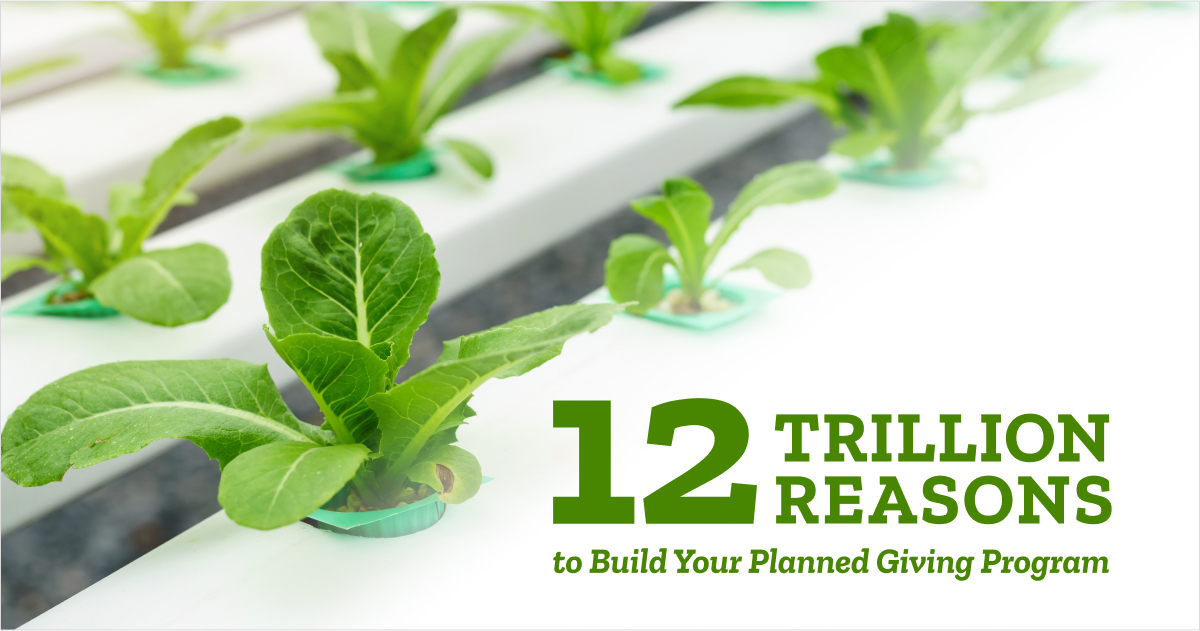The most significant wealth exchange in history is happening. Right now. In the United States.
Over the next 20 years, it is estimated that more than $84 trillion in cash and assets will transfer from Silent Generation and Baby Boomer households to their heirs—as well as to their nonprofits of choice. Experts believe that almost $12 trillion of this monumental sum will be contributed to nonprofits.
It is worth noting that these estate and deferred gifts will not automatically and evenly flow to nonprofits everywhere. Instead, donors will contribute to organizations working now to inspire and earn these legacy gifts. In short—amid this enormous change—the organizations that will succeed are those that turn their attention to legacy giving.
Benefits of a planned giving program
When building a planned giving program, nonprofit staff, board members, and other vital stakeholders should consider the following organizational and donor benefits.
- Legacy giving benefits donors by improving psychological well-being and expanding giving opportunities. Donors receive tremendous psychological benefits from making significant investments in causes that are meaningful to their lives and align with their values. Because planned gifts are often contributions in the future, they typically do not impact donors’ everyday cash flow—so for smaller-dollar donors, this can unlock their chance to make a transformative contribution to a cherished cause. According to a recent study by FreeWill, some nonprofits have found that more than 70% of their planned giving dollars came from outside their top 10% of donors.
And for all donors, planned giving introduces greater flexibility and increased options for their giving decisions.
- A planned giving program ensures a more stable future for your worthy cause. Building a robust planned giving program now is like planting seeds for the future—an act that will create a pipeline of inspired future gifts to help your organization prepare for the years to come. This is particularly relevant as the wealth transfer continues and the donor landscape changes. Deferred and estate gifts help to create stability as organizations engage and build bonds with new generations. Consider that for some, a bequest or gift in a will or trust is not their last gift, but their children’s first.
- Legacy giving yields high returns on investment. A donor’s final legacy contribution is often their most significant contribution to the organization(s) they value most. In a study by AskRight, researchers found organizations realized an average return of $56.83 for every dollar invested in planned giving—which far surpasses returns from major giving ($33.33) and other forms of annual giving ($8.41).
Starting—or reinvigorating—your planned giving program
- Honestly assess current capabilities. Gift planning adds a layer of complexity that must be considered. Putting the proper infrastructure in place is critical to your long-term success—though what “the right infrastructure” looks like can vary, depending on your organization’s size, goals, budget, and capacity. All organizations should consider questions such as:
- Are internal team members in finance, development, and operations prepared to work together to make a planned giving program a reality?
- Do we have appropriate policies and procedures in place?
- Do we have a compelling case for support for legacy gifts?
- How will we manage planned gifts made in support of our endowment? Will we make investment decisions in-house? Should we create a fund(s) through a community foundation? Should we hire an investment management firm?
- Do we have suitable systems to track planned gift intentions, bequests, and other deferred gifts?
- Where will planned giving support come from? Have we identified and cultivated donors considering their future legacy? Are fundraisers equipped to manage planned giving conversations?
- Have we implemented strategies for recognizing and celebrating those who make their planned giving intentions known? Do we have a legacy society that follows leading practices?
- Have we formed close relationships with financial advisors, attorneys, and others who counsel donors as they consider their deferred and estate contributions?
- Identify your best planned giving prospects. Your best prospects for planned gifts are people—individuals and families—instead of corporations, businesses, or foundations. You can learn more about their common attributes and affiliations here.
- Spread the word! Develop a suite of marketing and communication materials—a planned giving webpage, a brochure or printed one-pager, email and appeal templates, standard language to weave into newsletters and appeals, legacy donor stories—that make your case for legacy giving, detail planned giving options, provide information about your legacy society and benefits, and offer contact information for deeper conversations.
- Start integrating planned giving into your donor discovery, cultivation, and solicitation conversations. Cultivating prospective donors for planned gifts is a skill and an art. It requires thoughtful planning, follow-through, and patience—often, you will have many conversations with a donor before they complete a legacy gift. Start integrating planned giving into conversations now. To equip your fundraisers to navigate these sensitive conversations, you can view this article for introductory language and guidance.
Are you interested in learning more about planned giving and endowment building? Contact [email protected] if you would like to talk further.
Sources:
The Greatest Wealth Transfer in History Is Here, With Familiar (Rich) Winners →
Cerulli Anticipates $84 Trillion in Wealth Transfers Through 2045 →





